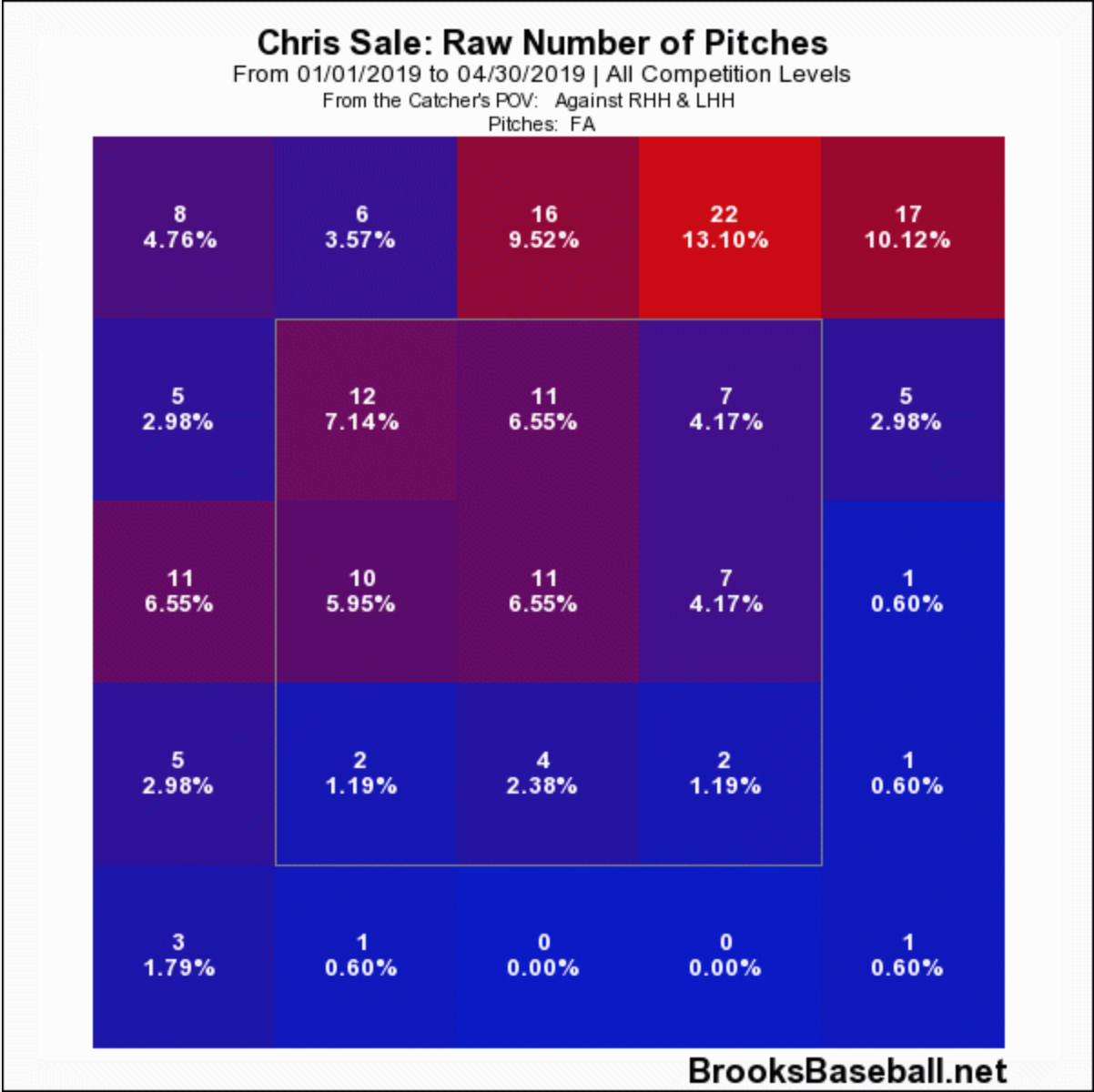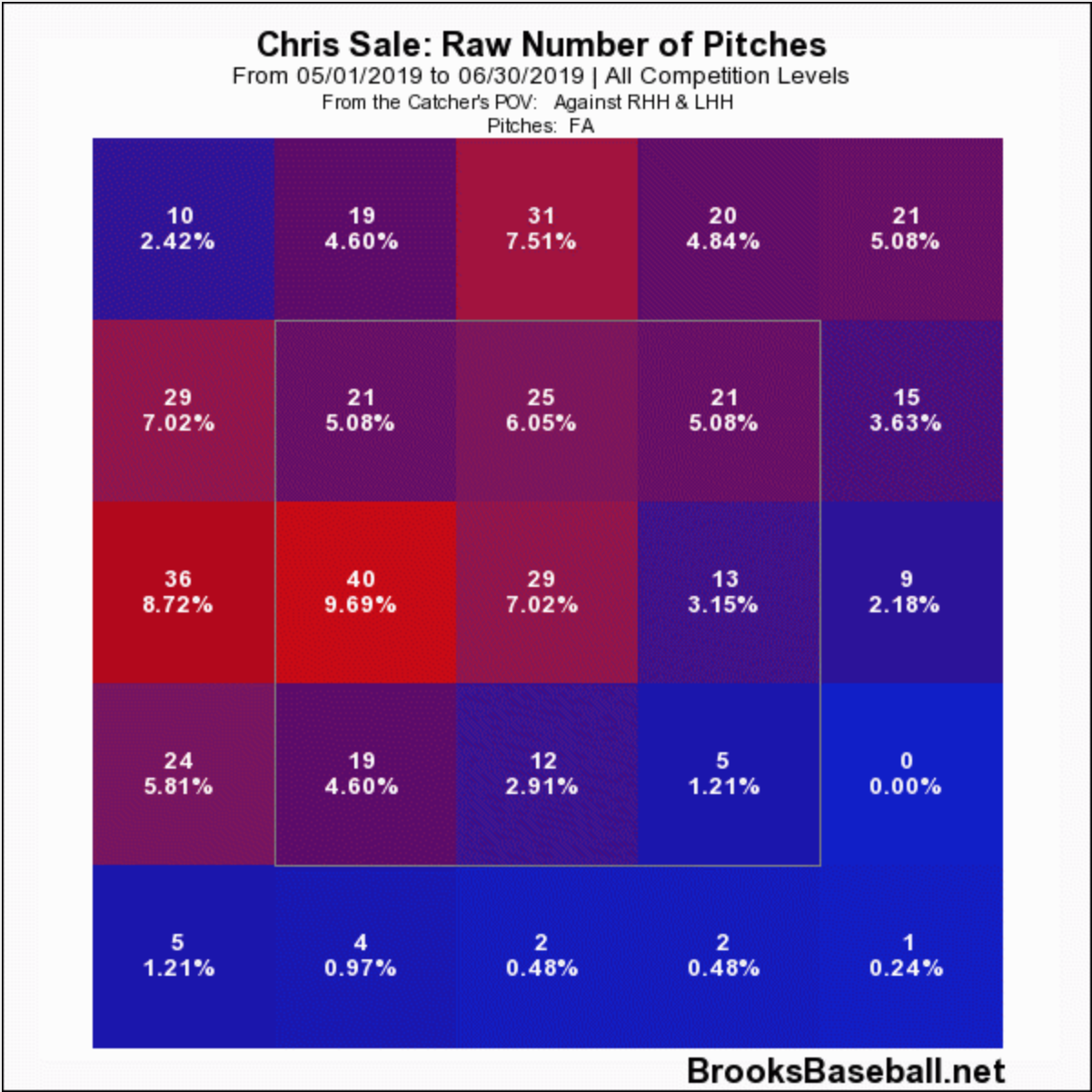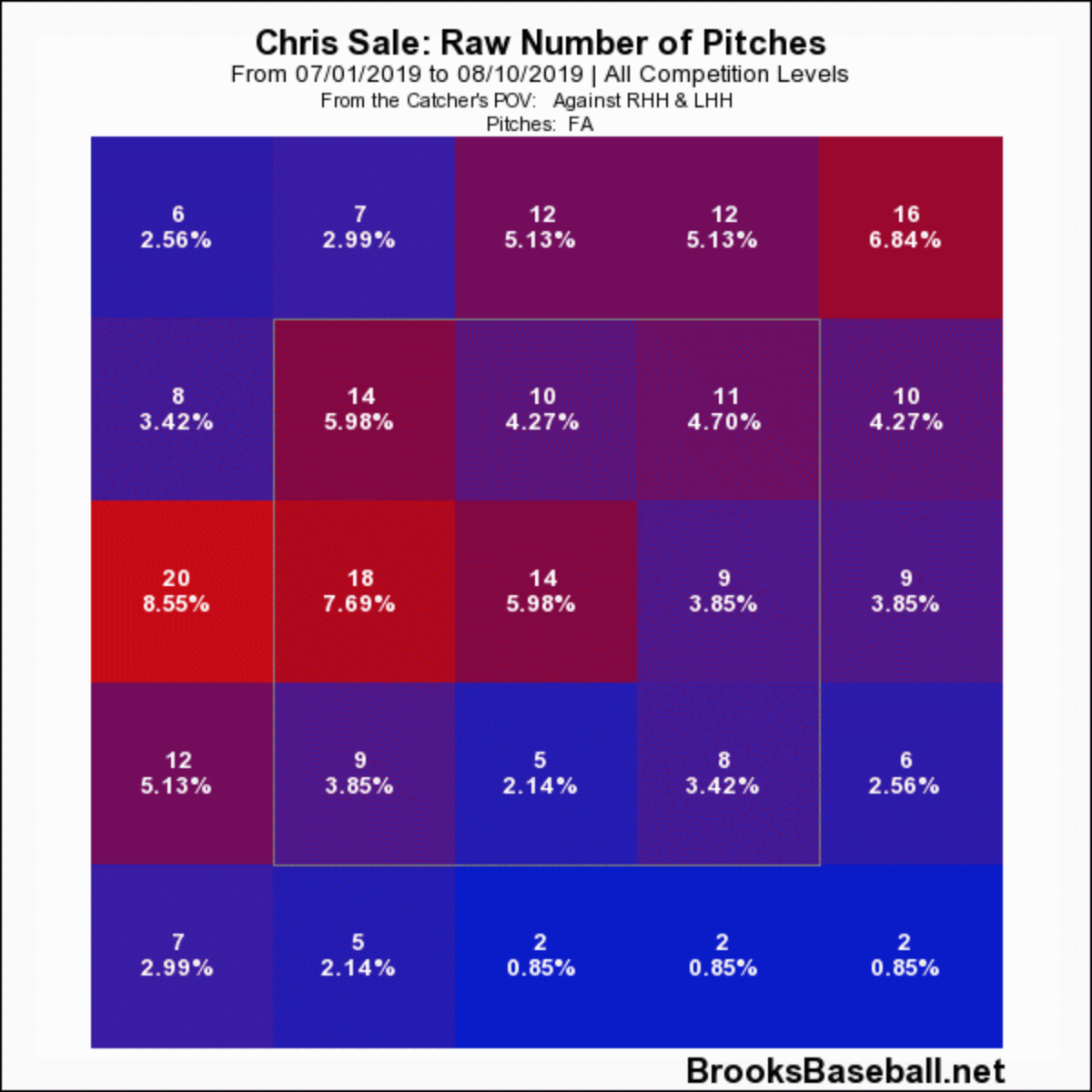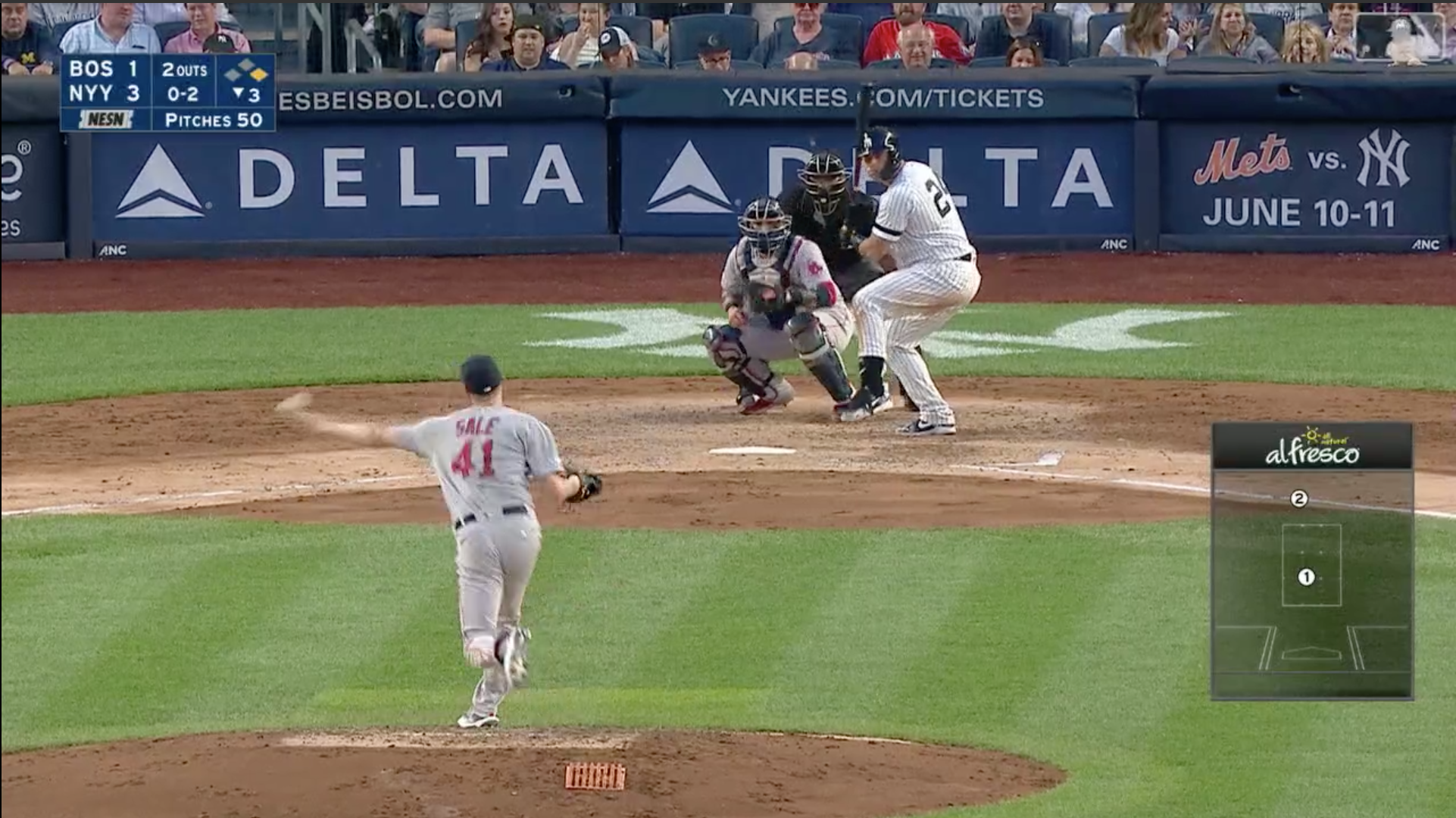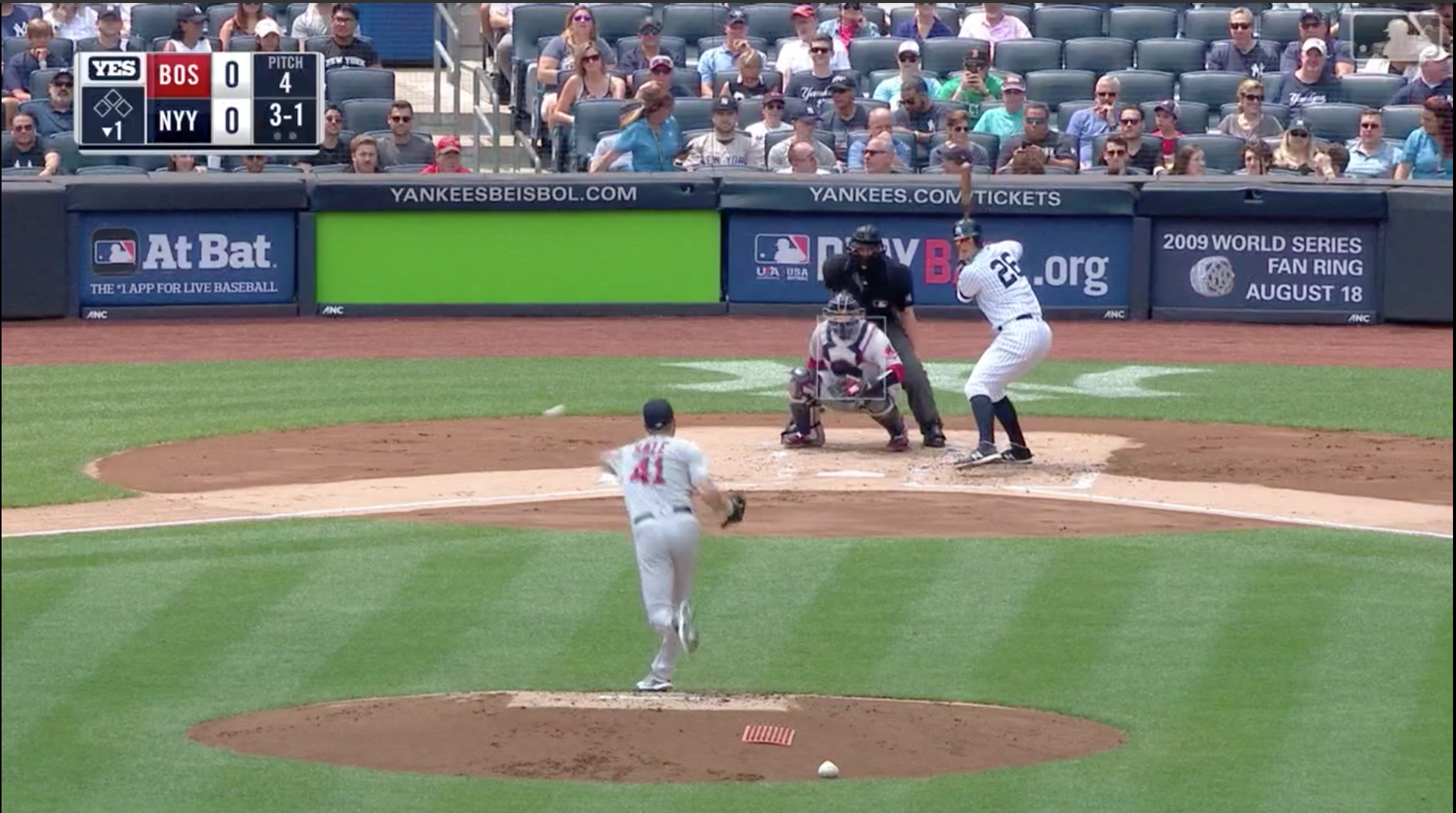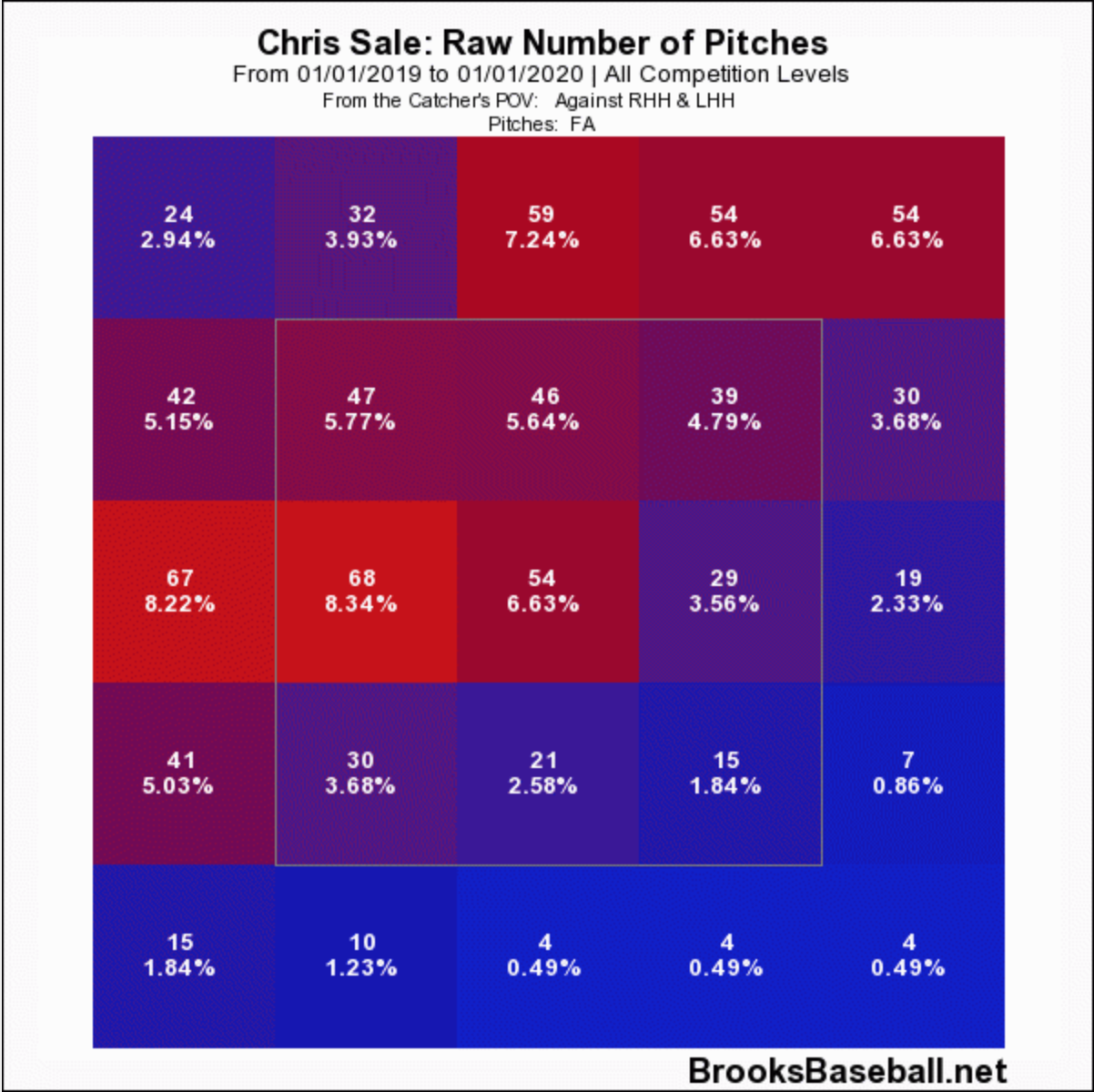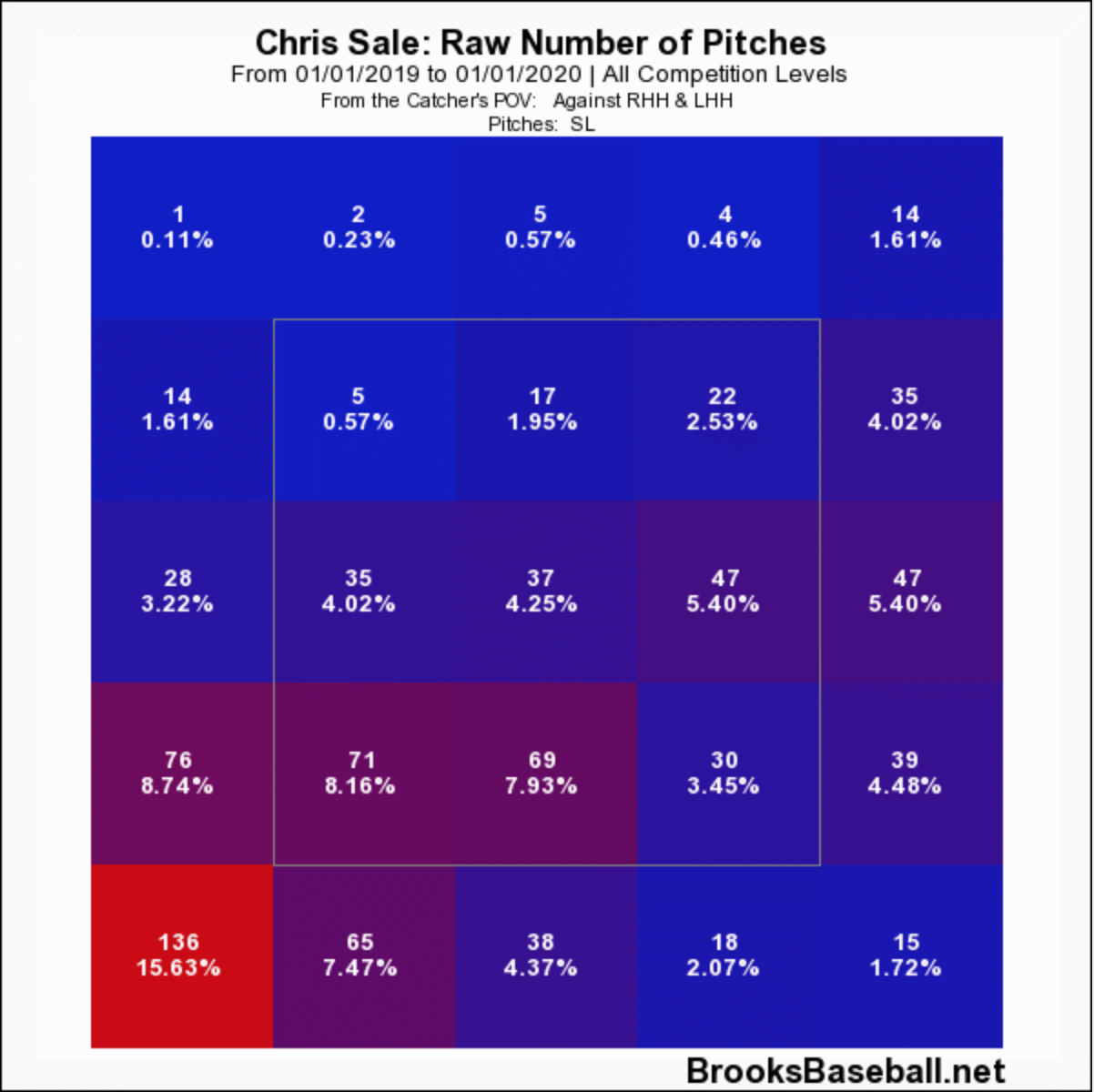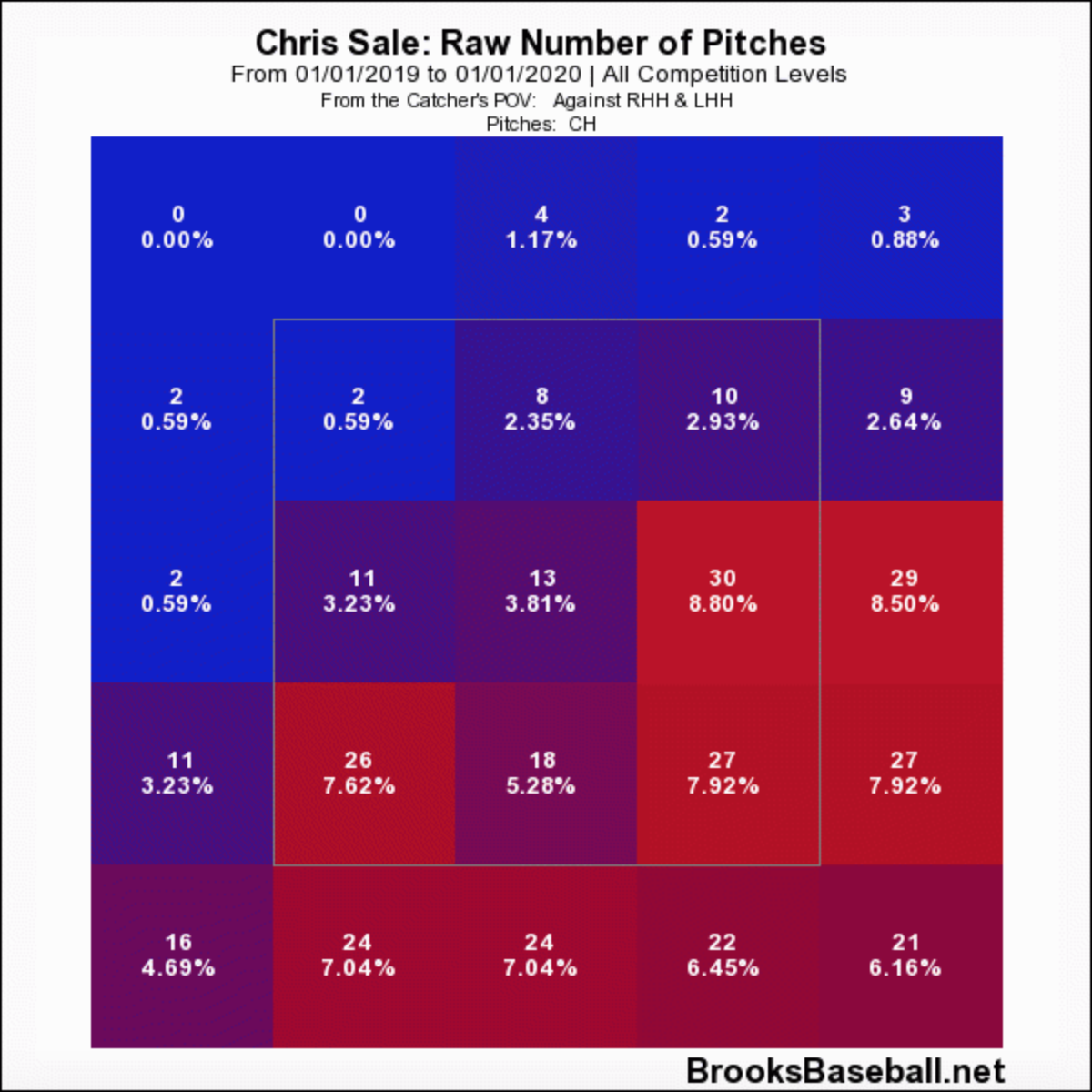Chris Sale was the prized acquisition of the 2016-17 offseason—a much-needed addition by Boston Red Sox president Dave Dombrowski after the retirement of David Ortiz a few months earlier. The Red Sox had finally added their superstar to the rotation after David Price did not live up to expectations in his first season with Boston, while Rick Porcello was never thought of as a dominant force even though he was fresh off an AL Cy Young. Sale did not disappoint early in the 2017 season, earning a “Sale Day” moniker every time he took the bump as the city of Boston took to Sale as it had to Pedro Martinez at the turn of the century.
Everything came crashing down once August came around, and that campaign ended on a sour note when he gave up a go-ahead home run to Alex Bregman in Game 4 of the ALDS following a poor Game 1 performance. Sale entered 2018 hoping to right the ship and pitch a complete season, but that wasn’t to be the case. This time, Sale endured some shoulder injuries in the middle of the season and was a shell of himself. He had some decent starts throughout each round of the postseason, though he was far better in relief against the New York Yankees and the Los Angeles Dodgers, both being series-clinching games.
To make sure Sale would still be effective when he reached August and September, manager Alex Cora decided to bring him, and the rest of the Red Sox starting rotation, along slowly, after a long October run. April was rough for Sale as a result, as he didn’t throw nearly as hard and had subpar results. As May and June came around, he had his velocity up and was punching guys out like clockwork with minimal damage, including a 17-strikeout performance against the Colorado Rockies.
This is where we reach Sale’s breaking point: July and August. He has been disastrous these past couple of months while having some of the worst starts of his career—both against the division-leading Yankees last week. In a season where Sale has had some of the best and worst starts of his career, we dive in to see what could be the answer to such a conundrum.
Peaks and Valleys
Much has been made of the fact that Sale’s velocity has rebounded since April, leading to fantastic results in May and June—though it hasn’t helped his July and August returns:
| FA Velocity | FA xwOBA | ERA | |
| April | 92.4 | .455 | 6.30 |
| May | 93.6 | .209 | 2.82 |
| June | 93.7 | .157 | 2.73 |
| July | 93.6 | .412 | 5.86 |
| August | 93.6 | .346 | 19.64 |
Here, we can see that even though he sustained his velocity, his fastball is still being lit up, and his overall success has tapered off.
With the trends set over this season, it would be worthwhile to split the campaign into three phases for Sale: April (including March), May and June, and July and August. Now, let’s look at the location for the four-seamer during each of the three phases.
April
May-June
July-August
Sale did a much better job of locating his fastball to the glove side of the plate in May and June than he did in the other two segments we designated. Even though May and June yielded the highest percentage of four-seamers in the middle of the plate, he also has not thrown nearly as many fastballs out of the zone—fairly uncompetitive pitches—as he has in these past couple of months.
We can make our diagnosis: What happens when you have an added emphasis on higher velocity over location? The answer is overthrowing. Notice Sale’s glove arm in both images.
May
August
As you can see, Sale’s glove arm is slightly more closed in his May start against the Yankees than his most recent start against them, meaning he was staying closed for a little longer than he is now, making the difference between hitting or missing desirable locations for a pitcher.
That is a fairly simple concept to grasp. Considering why a pitcher overthrows in the first place—fatigue—maybe we can theorize why Sale continues to struggle when the latter stages of the season come on.
The Breakdown
Fatigue can be a backbreaker for any athlete—pitchers not excluded. Any sort of deviation in a pitcher’s mechanics can result in unfavorable pitch locations, diminished velocity—a plethora of issues. The returns are bad news, and no pitcher wants that on their resume.
For the 6’6″, 180-pound Sale, his slender build has been an issue since the White Sox drafted him in 2010—would he be able to pitch effectively for the entire season? He is not built like Nolan Ryan or Roger Clemens—guys who are well known to pitch at elite levels for the entire season while having long careers. Sale’s been able to pitch at an elite level since his MLB debut in 2010, in his ascent to becoming one of the best pitchers in baseball. Though with his recent struggles in the later stages of the season, one can only question whether the body type is an issue—maybe he can’t physically produce the 200 quality innings that’s required as a starter given his current exertion.
Exertion is a key word here. Sale’s delivery is max-effort, and his fastball and slider are high-intensity pitches. Considering his demeanor, he most likely maxes out for every pitch. Over the course of the season, I don’t think any pitcher can survive a max-effort approach and pitch at an elite level at the end of it. You can see that a pitcher such as Kyle Hendricks can get hitters out without going over 88 mph. Of course, Hendricks is an entirely different pitcher with a near contrarian approach, but surely Sale could dial back the velocity yet still find a way to get outs effectively.
Given Sale’s current command, a diminished velocity would likely send him back to his April numbers—something he wants no part of. That would have to improve for him to have any success. Though while looking at his pitch location for his three pitches this season, I noticed something.
Four-seamer
Slider
Changeup
For each pitch, you have a really good idea of where it’s going to end up. For the fastball and slider, they are generally going to be glove side, while the changeup is arm side and down. This is a fairly predictable sequence, and this is what makes Sale’s velocity so important. The velocity helps him overcome the predictability in his sequencing and location, by giving hitters less time to react to the pitch. I think with better sequencing and location diversity, we could see Sale flourish despite resorting to a “cruising speed”—not pitching at max effort. Actually, there’s a chance he and personal catcher Sandy Leon have found that.
In Thursday’s start against the Los Angeles Angels, Sale was dominant, striking out 13 batters over eight innings while only allowing two runners. Sale has been dominant before, so just showing those great numbers does not change anything. Though a couple of at-bats in the game stuck out to me—against Shohei Ohtani in the seventh inning and Kole Calhoun in the eighth.
Against Ohtani, Sale had thrown fastballs inside to get ahead before throwing some sliders that were not particularly close down and away. At this point, given Sale’s hot spot for the slider is down and away, there was seemingly a good chance that there was going to be another slider that would be down and away—though this time for a called strike. Ohtani was most likely thinking this too, but Leon called for a fastball on the inner half, and Ohtani took the heater looking.
Facing Calhoun, Sale again started off with a fastball inside, getting ahead in the count and then throwing the remaining pitches outside while throwing two sliders down and away with two strikes, which were fouled off. This is when Sale breaks off a front-door slider, to which Calhoun was most likely thinking it was a fastball out of the hand, which would have set up another slider down and away. In yet another brilliant choice in pitch selection, Sale picked up his 12th strikeout of the night on a feeble swing from Calhoun.
This is a critical change. As previously shown, Sale does not generally use that part of the plate with his fastball and slider. By using a new tactic, he was less predictable. With that sweeping slider, he’s able to freeze left-handed hitters if he drops it off on the inside part of the plate. Considering he also carved up Mike Trout by throwing a combination of backdoor sliders and inside fastballs, Sale might have found a new way to sequence his pitches that will help him succeed even with diminished velocity—saving those special “bullets” for when he’s in a high-leverage spot, it’s late in the season, or he’s in any situation where he needs his best to get by—and the Red Sox will need every bit of his best if they are going to get back in the postseason hunt.
(Photo by Scott Winters/Icon Sportswire)


